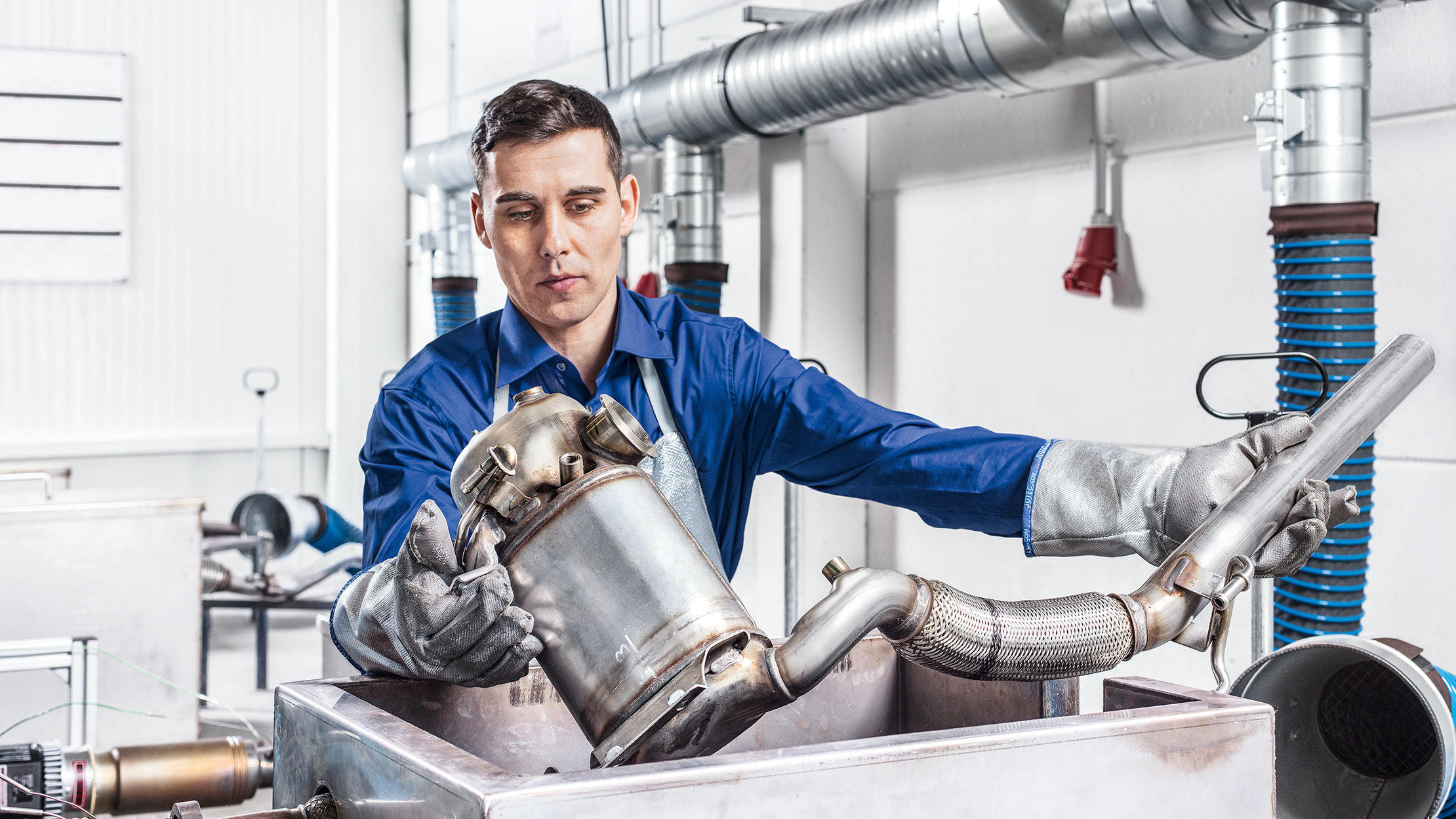Soot Emissions Systematically Validated in the RDE Field Test
IAV operates a modern facility for testing diesel particulate filters – the basis for model-assisted regeneration strategies
Meeting future emission limits will demand effective optimization of exhaust gas aftertreatment. The prerequisite here is a perfectly calibrated combustion process, combined with an effective strategy for regenerating the particulate filter. At Gifhorn, IAV runs a modern center for testing diesel particulate filters (DPF) that makes a major contribution to validating the reduction of emissions from diesel engines.
One key starting point in devising regeneration strategies for diesel vehicles is knowing the level of soot emission in relation to a specific driving situation. “Following standardized test drives, the quantities of particulate matter in the filter are determined very accurately without destroying the filter”, explains Professor Kay-Jochen Langeheinecke, head of the Exhaust Gas Aftertreatment and Simulation department at IAV. “We can use these measurements to define validated load models for the DPF.”

Reproducible measurement conditions
In Gifhorn, IAV operates a DPF testing facility that is designed for particulate filters from passenger cars and light commercial vehicles and which is being advanced all the time. A standardized work process that has been tried and proven in numerous production-ready projects guarantees reproducible measurement conditions and results. Besides the necessary installation and removal activities, the process also includes comprehensive documentation.
The primary task consists of weighing the difference before and after burning off the soot under controlled conditions to regenerate the filter. Each weighing operation must be prepared by appropriate conditioning – this ensures an initial state that can be reproduced at any time, enabling IAV staff to determine soot loading to the accuracy of one tenth of a gram. Following regeneration, the DPF is ready for the next test drive, either on the basis of current RDE journey profiles or in line with customer-specific briefs.
Continuous measurement of unloaded weights checks the plausibility of soot loads and can also provide further information, such as ash loads. “The particular challenge lies in determining the very low load quantities in relation to the overall weight of the exhaust system”, Langeheinecke says. “We can only do this with sufficient precision by conducting extensive conditioning processes.”
As many as 70 test drives a week
The DPF testing facility provides IAV’s experts with certified measuring equipment for monitoring and recording mass and process variables, such as temperature, mass flow and ambient conditions. The controlled thermal regeneration of particulate filters takes place under reproducible conditions either in the vehicle or in a removed state in the laboratory. For the purpose of conditioning particulate filters, the DPF testing facility is also equipped with computer-assisted high-performance ovens and blowers for convection drying. In addition, there are many ways of putting the DPF substrates through a process of initial aging.
Over the course of numerous volume production projects, IAV has permanently improved and standardized the processes involved in work preparation over recent years. “Our planning efficiency and the staggered use of resources make it possible to work on several projects side by side and carry out as many as 70 endurance runs a week”, Langeheinecke says. The boundary conditions can be matched in a flexible way to the requirements of each customer. It is possible to select any temperature, mass flow as well as regeneration and conditioning times, enabling IAV to ideally adjust measurements to the specific particulate filter and given load.
“We are well prepared for future aspects, such as mobile measurement of emissions under real-world driving conditions (using PEMS) and for the gasoline particulate filter (GPF), Langeheinecke says, looking ahead.


